













The magazine of the art-form of the photo-essay
“A free, really high quality photo-essay magazine. Fabulous!”
Stephen Fry. British actor, writer and film & documentary maker

May 2014 issue



by Chris Leslie
The word ‘renaissance’ translates directly from the French ‘Rebirth’. Glasgow has a long history of rebirths, from the
city of monks to a city of merchants, to the industrialised second city of empire, then its most recent reinvention - or
rebirth - as city of culture and ‘second city of shopping’.
In many ways the city’s many regenerations are no different to other deindustrialised cities in the UK and Western
Europe. But the collapse of heavy industry at national level has left Glasgow at a particular disadvantage. Head out
from the admittedly swish city centre and you will find vast landscapes of brown field wastelands and failed housing
schemes in desperate need of investment, new build, anything (even a Tesco would suffice).
Demolition is of course familiar to Glaswegians, the city fathers being renowned for their contempt of the city’s built
environment. In the previous round of mass demolition in the 1960s and 70s, tens of thousands of Glaswegians were
decanted from slums into new schemes and high-rise flat developments. These represented a utopian vision for
social housing - kitchen and indoor bathroom, central heating and mixer taps were seen as a solution to some of the
worst slum conditions in Europe at that time.
By the turn of the 21st Century these high-rise flats are the solution that became the problem. The simple wrecking
ball has been replaced with multi-million pound demolition contracts, explosives developed by NASA, 1/4 mile
exclusion zones and spectacular demolition shows for all the family to watch. But the simple ethos of ‘knock-em-down
and build-em’-back-up-again remains the same.
Glasgow has the highest concentration of residential flats in the UK and since 2006 a quarter of the city’s high-rise
housing has been demolished. Councilors, officials and local media celebrate the death of a high-rise as progress.
There is little time for contemplation or nostalgia in a city that markets its renaissance through trendy bars, bistros
and shops, servicing a booming and diverse cultural scene.
For many of the residents in the deprived and failed housing schemes in the north and east of the city, the reality of
this ‘renaissance’ is hard to credit. Dalmarnock lay derelict and forgotten for 30 years before its salvation via a two
week mega-sporting event. High-rise flats are marked as unfit for purpose and demolished while flats of the same
basic build and design in the same scheme are pardoned - and then seem to ‘prosper’. And what of the new build
schemes that replace them or the scattering of communities across the city? Besides bricks and mortar and 1960s
architectural disasters, Glasgow is also losing part of its history, its communities, homes and memories – just as it did
in the 1960s.
No one can argue that Glasgow needs regeneration, or that a renaissance could usher in positive change. But does
this renaissance have an end game, or is Glasgow poised for an endless cycle of demolition and new build? Will we
be witnessing the same whole scale demolition of the houses we are building today?
The choice Glasgow has is not between changing and not changing, but about the nature of that change, who owns
it, who develops it and how sustainable it is. Until we have that debate, the Glasgow renaissance will be of limited
value.
Since 2007 Glaswegian Photographer and filmmaker Chris Leslie has been documenting the condemned and
disappearing areas of the city. Using photography, video and audio he works with residents to document the failed
landscapes, flats and homes from areas across Glasgow. Most of the areas he documented have now disappeared.
You can view more of his work here - www.chrisleslie.com
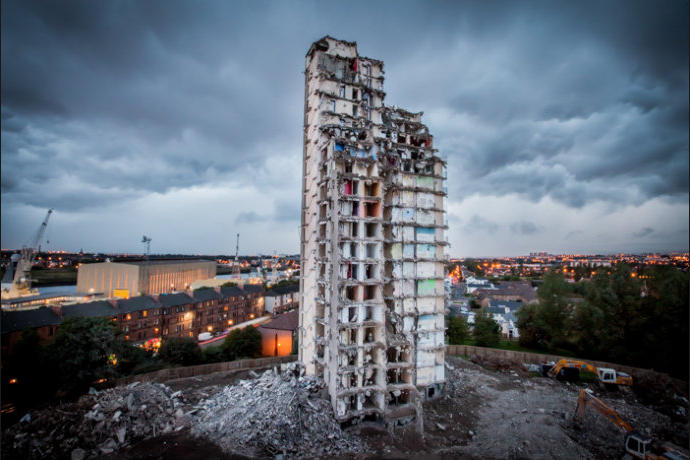
Plean St Flats in Scotstoun mid way through demolition.
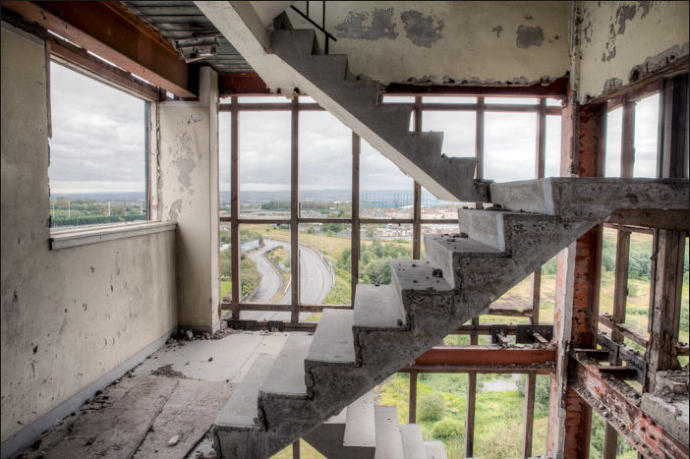
Red Road Flats stripped back to their skeletal state awaiting demolition - June 2011.
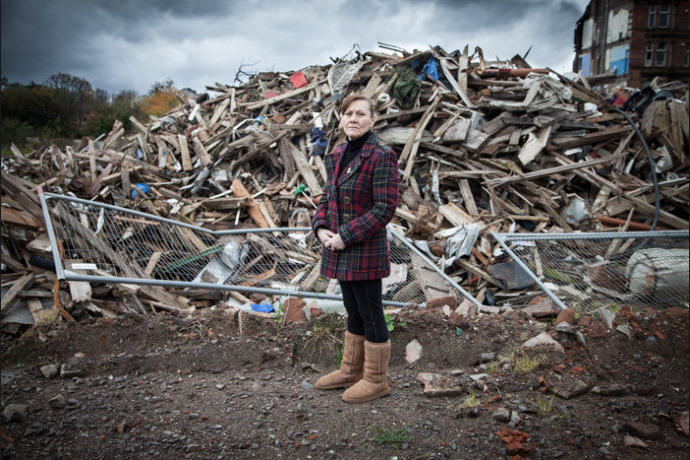
Margaret Jaconelli stands outside her destroyed home after being evicted to make way for Commonwealth Games
development. August 2011.
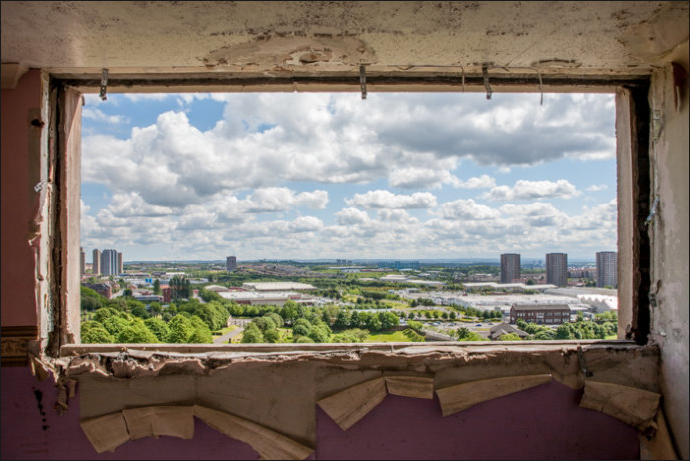
Lost view from the 14th floor of Fountainwell Court. The high rise was demolished in 2009.
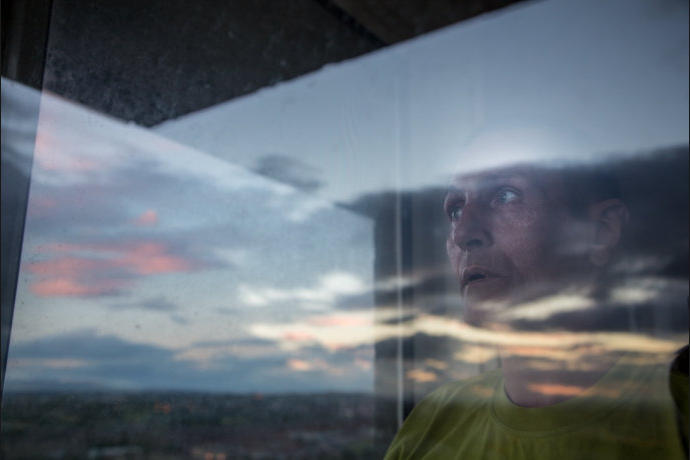
One of the last tenants of the Whitevale Flats in Gallowgate admires his last view of the sunset. August 2013.
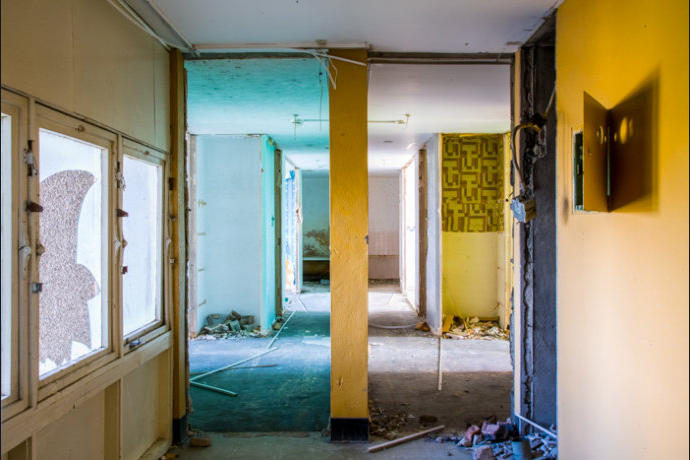
Fountainwell Court - Sighthill, stripped back awaiting demolition. June 2009.
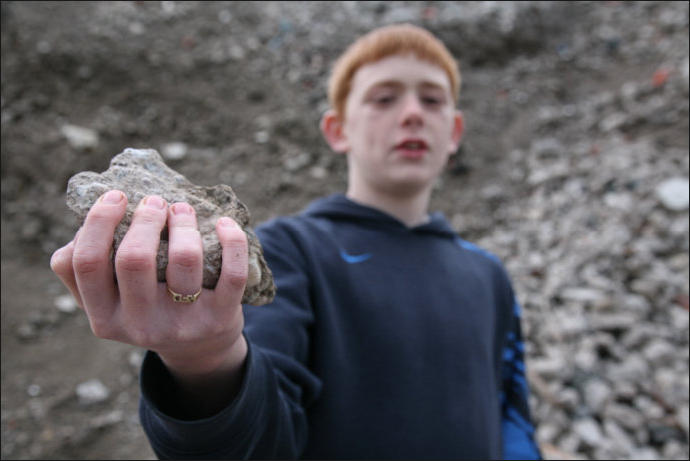
Dalmarnock youth stands amongst the rubble of the demolished high rise. 2008.
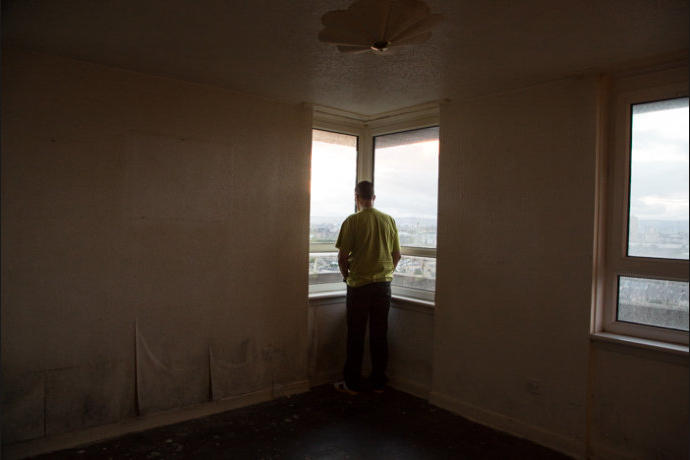
One of the last tenants of the Whitevale Flats in Gallowgate - August 2013.
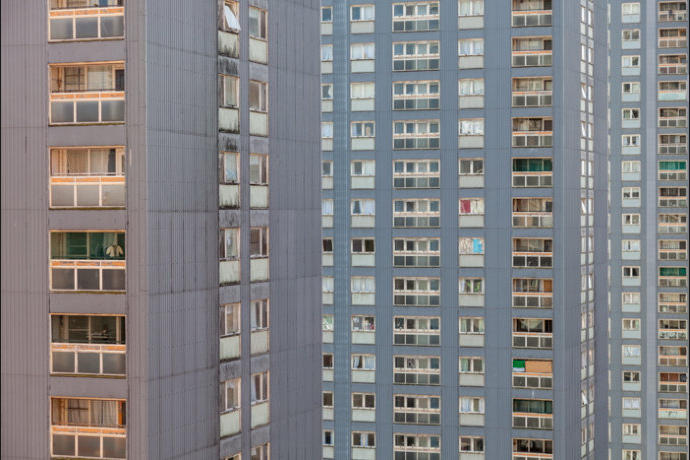
Red Road flats in 2009 as the flats start to empty of residents.

Lost view from the kitchen on the 18th floor of high-rise in Sighthill Estate.
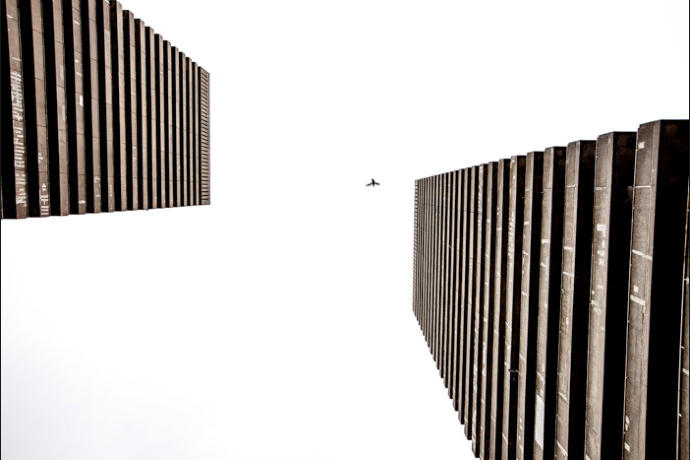
Looking upwards on Glasgow's Brutalist Twin Towers - both flats were emptied of residents in Feb 2014 and await
demolition.
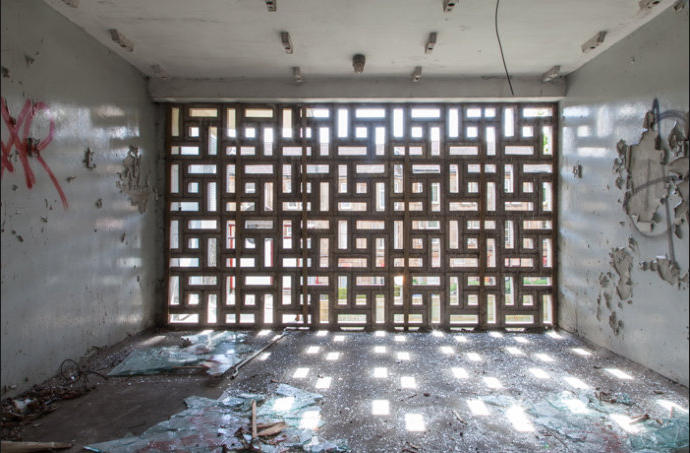
Ibrox flats drying area - Sep 2012.
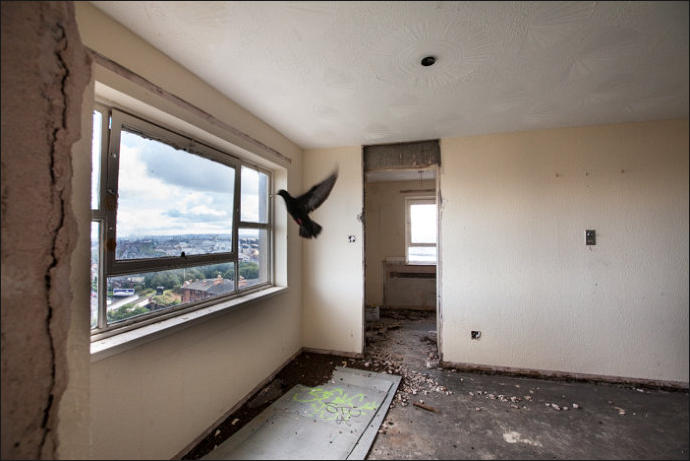
Plean St Flats in Scotoun awaiting demolition - August 2010.
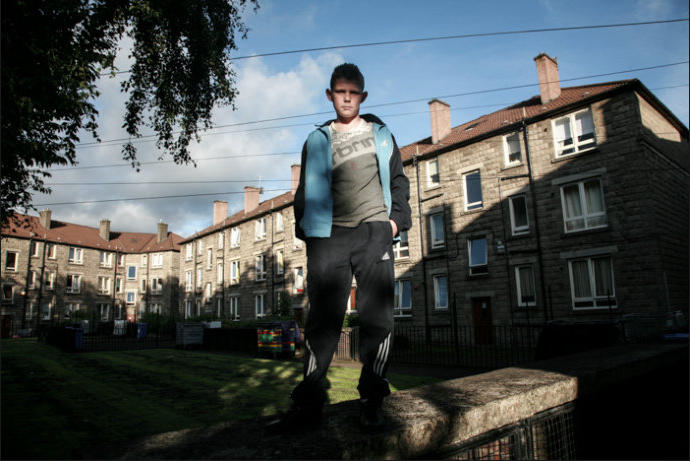
Dalmarnock Youth - 2008.
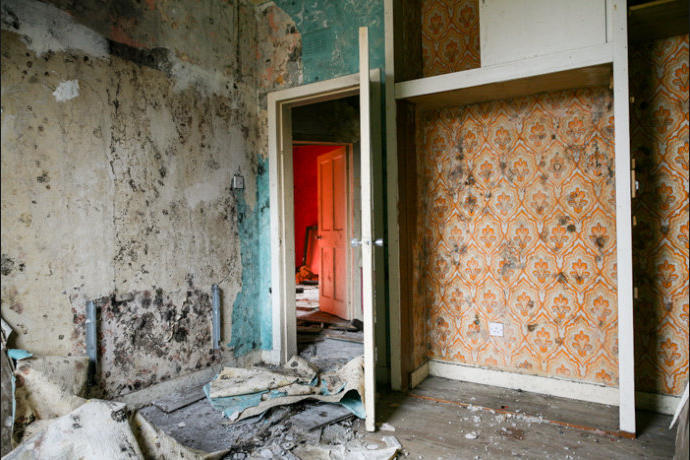

The old Oatlands estate in mid demolition after being left derelict for 10 years. 2008.
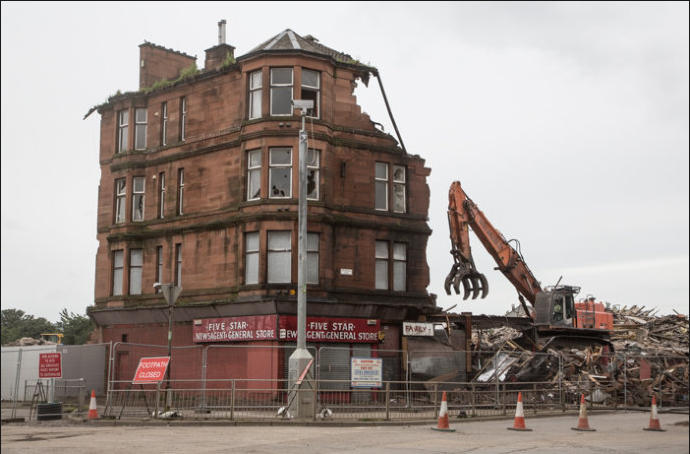
The last remnants of Old Dalmarnock being demolished in 2013 to make way for a transport hub (car park) for the
Commonwealth Games.
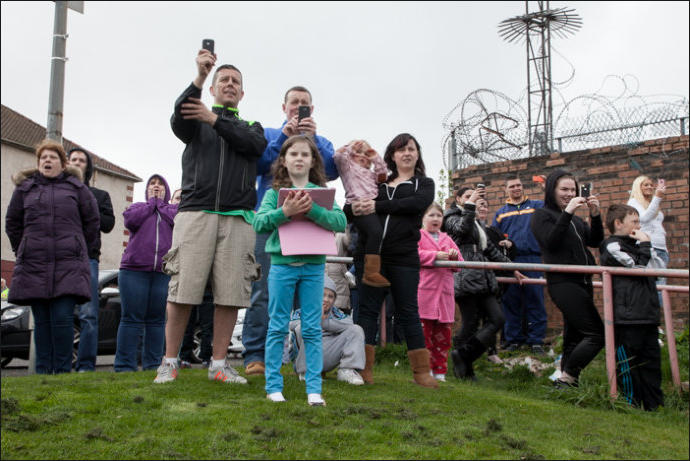

Residents in the north of Glasgow venture out to witness the demolition of Birnie Court, one of the flats at Red Road.










